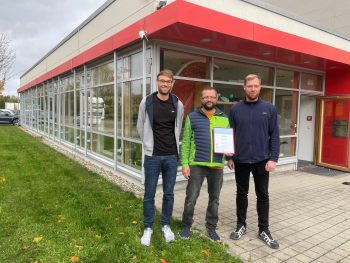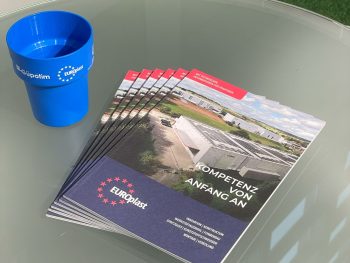EUROplast in plastic processors edition 09/01

Tips for practitioners
Print version in Acrobat Reader format
The material matrix is intended to help developers who are not native to the plastics industry narrow down the right material. The matrix is deliberately kept simple, but is intended to help avoid major wrong decisions.
Practice has shown that new developments often take wrong paths when it comes to material selection, which are difficult to correct later. If a new product is created, the materials must be largely narrowed down at an early stage of construction, on which, for example, strength calculations or shrinkage are based. Some properties are provided with averaged real values, others only with school grades in order to be able to compare (1: high value / 6: lowest value)
If the raw material price is considered too late because the material was selected based on purely technical aspects, this can endanger an entire project or at least delay it enormously. However, prices are subject to a wide range of fluctuations, especially for standard plastics. Shown here is a snapshot of medium quality, with purchase quantities of around 1000 kg (as of September 2001).
In addition to calculating its own weight, the density of the material is also included in the calculation, since the volume of a plastic part is predetermined and the weight is only calculated using the specific weight. Here, looking at the volume price is an interesting statement.
Strength here means the tensile strength, knowing the fact that plastic components are primarily calculated according to the maximum elongation. This means that you define the environmental influences and then look in the tables for the strengths that you can expect the component to have in order not to exceed the maximum limit elongation.
The level of stress to which a component is exposed is crucial for its temperature resistance. It is also important how long a component is exposed to high temperatures. The values given here are average values of the usage temperature over a medium exposure time and serve as a guide only.
It is important for the designer to know how far the material flows in the mold. Average flow lengths with 2 mm component thicknesses are mentioned here. It is important to know that the flow paths increase disproportionately with thicker walls. Furthermore, in every material group there are also types with better and worse flow properties. And lastly, it must be mentioned that hot runner technology with multiple connections makes it possible to produce parts with a high wall thickness-flow path ratio.
For processing shrinkage during injection molding, only average values are given for a wall thickness of 2 — 3 mm and optimal part processing, which are based on years of experience. Due to tool temperatures that deviate from the manufacturer’s specifications, as well as inadequate temperature control channels in the tool and extreme cycle times, the real shrinkage values can deviate significantly from the values stated here. For this reason, the information provided by raw material manufacturers often covers a wide range.
The draft angles are important for removing the components from the mold without drawing marks. Due to the different shrinkage of the materials, the required demoulding angles also vary. Furthermore, thin walls require larger demolding trays than thicker walls. VDI level 30 corresponds to a medium structure with a roughing depth of 3.5 μm, although the tool should be designed with VDI level 33 due to the somewhat reduced image.
The average cavity pressure is, on the one hand, a calculation variable for the design of the injection molding machine, where strong fluctuations can occur depending on the geometry of the component, and on the other hand, the demolding forces also increase as the cavity pressure increases. The number and design of the ejectors must be adapted to these forces.
Impact strength is an important aspect for the suitability of plastic components for everyday use. In addition, the structural design contributes significantly to the durability of a component after impact stress. The influence of water absorption in polyamide and the general possibility of impact modification with, for example, elastomer modifiers should be mentioned here.
The chemical resistance of a plastic is a very complex topic because, in addition to the large number of chemical substances, their concentration and the ambient temperature also play a major role. In addition, most common chemicals are mixtures of a variety of individual substances. This means that when assessing chemical resistance you have to go through long lists of substances and the substances with which the component later comes into contact are often not tested or these substances are difficult to determine. In general and very simply, one can say: Amorphous plastics (mostly transparent plastics, if not colored) have poor chemical resistance. Partially crystalline plastics (mostly opaque plastics, if not colored) have good chemical resistance.
Apart from special processing processes (with very fast cooling speeds), all amorphous plastics are more or less transparent and all semi-crystalline plastics are opaque and translucent if the wall thickness is small. An exception here, however, is ABS, which is opaque although amorphous because it has been copolymerized from different raw materials, which influences the refraction of light. Basically, it should be noted that the dimensional requirements are often too high for plastic parts. However, it is often possible to cope with larger tolerances through a plastic-friendly design.
Property matrix of the most common thermoplastics




more comments




